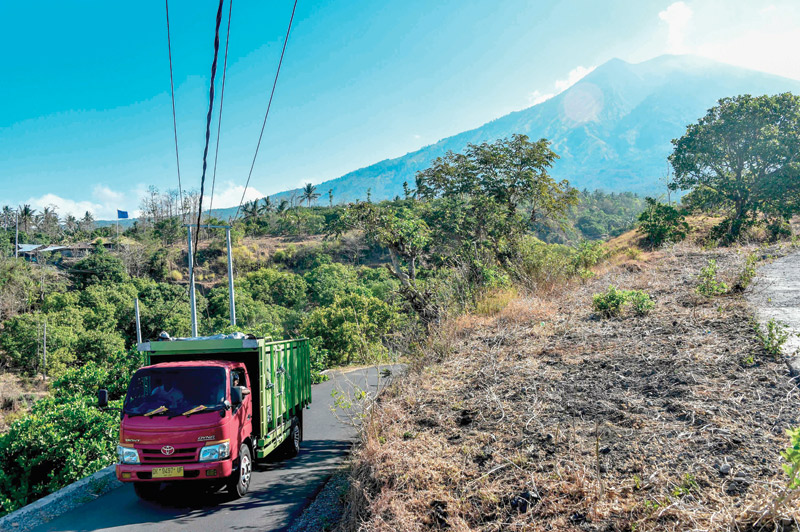

With just a bag full of clothes, NiNyoman Maneh fled her home near the rumbling Mount Agung volcano on the Indonesian resort island of Bali and sought refuge about 20 kilometres away. “I left behind my house, farm and cows. I keep thinking about what will happen to my possessions,” said distressed 43-year-old Maneh.

Tens of thousands of people have left their villages around Mount Agung after authorities raised the alert for the volcano to its highest level last Friday.
The 3,031-metre volcano rumbled back to life earlier this month after a lull of more than half a century, prompting some residents to flee and sell their cattle even before authorities declared a red alert.
There are now over 120,000 evacuees sheltered in government buildings, sports halls as well as in tents and residential homes in Karangasem and Klungkung districts.
Government experts said the volcano could erupt any time, with hundreds of tremors a day indicating that magma was reaching closer to the surface.
“The likelihood of an eruption is high, but we don’t know for sure when,” said Sutopo Nugroho, spokesman for the National Disaster Management Agency.
An eruption could be devastating for local communities, who rely on farming for a living on the fertile volcanic soil.
After remaining dormant for 120 years, Mount Agung last erupted in1963, sending clouds as high as 10 kilometres into the atmosphere.

The eruption lasted for months and produced torrents of searing gas known as pyroclastic flows, glowing rock fragments and ash that killed some 1,500 people.
Mount Agung is about 72 kilometres from Bali’s famed tourist strip of Kuta and 51 kilometres from the island’s cultural heart, Ubud.
Bali’s international airport is operating normally, but authorities have taken measures to ensure the safety of travellers in the event of an eruption.
These include preparing 10 airports on other Indonesian islands to handle diverted flights and 100 buses to people from Bali to airports on the neighbouring islands of Lombok and Java.
Some evacuees tried to salvage what they could, bringing with them their cows, bedding, and other household equipment. Others like Maneh arrived in makeshift camps with only their clothes.
“I was reluctant to evacuate, but all of my neighbours were leaving,” said Maneh, a resident of Sebudi village on the western slope of the volcano.
Ketut Ardika took his wife and two children on a motorcycle on Friday night as soon as the red alert was announced. He is now staying in the same camp as Maneh.
“It’s better to be here for now,” said Ardika, sitting on the floor in the agriculture office building in Rendang district.
“If we stayed, I don’t know if we’d be able to get out once the volcano erupted,” he said. “The road is bad and is passable for only one car at a time.”
Nengah Miasa said he, his wife and two children fled their village because they were terrified after a series of tremors from the volcano.
They ended up in a sports hall in the town of Semarapura, where 4,000 evacuees were sheltering in a building designed for 1,500.
“At that time there were two or three earthquakes in just one hour. We were very afraid,” he said. “We were told by the village chief to evacuate immediately.” — dpa
Oman Observer is now on the WhatsApp channel. Click here



